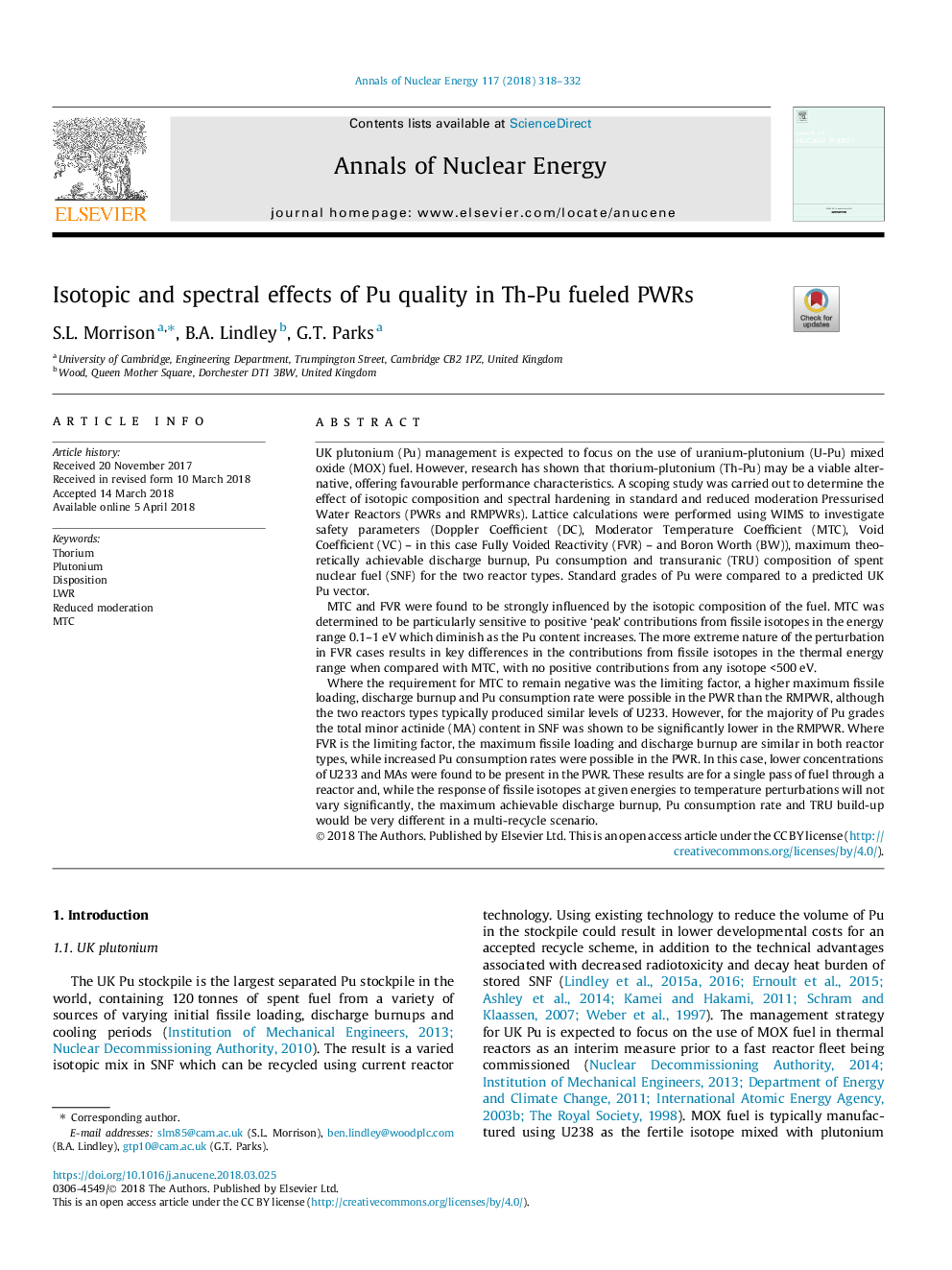| Article ID | Journal | Published Year | Pages | File Type |
|---|---|---|---|---|
| 8067023 | Annals of Nuclear Energy | 2018 | 15 Pages |
Abstract
Where the requirement for MTC to remain negative was the limiting factor, a higher maximum fissile loading, discharge burnup and Pu consumption rate were possible in the PWR than the RMPWR, although the two reactors types typically produced similar levels of U233. However, for the majority of Pu grades the total minor actinide (MA) content in SNF was shown to be significantly lower in the RMPWR. Where FVR is the limiting factor, the maximum fissile loading and discharge burnup are similar in both reactor types, while increased Pu consumption rates were possible in the PWR. In this case, lower concentrations of U233 and MAs were found to be present in the PWR. These results are for a single pass of fuel through a reactor and, while the response of fissile isotopes at given energies to temperature perturbations will not vary significantly, the maximum achievable discharge burnup, Pu consumption rate and TRU build-up would be very different in a multi-recycle scenario.
Keywords
Related Topics
Physical Sciences and Engineering
Energy
Energy Engineering and Power Technology
Authors
S.L. Morrison, B.A. Lindley, G.T. Parks,
